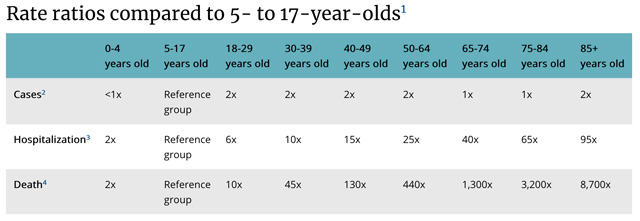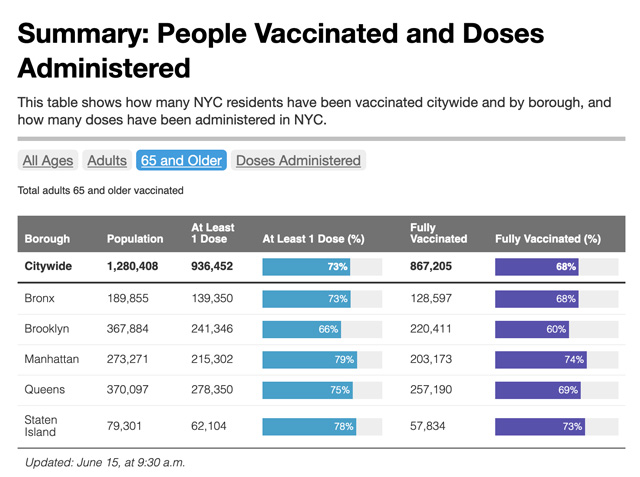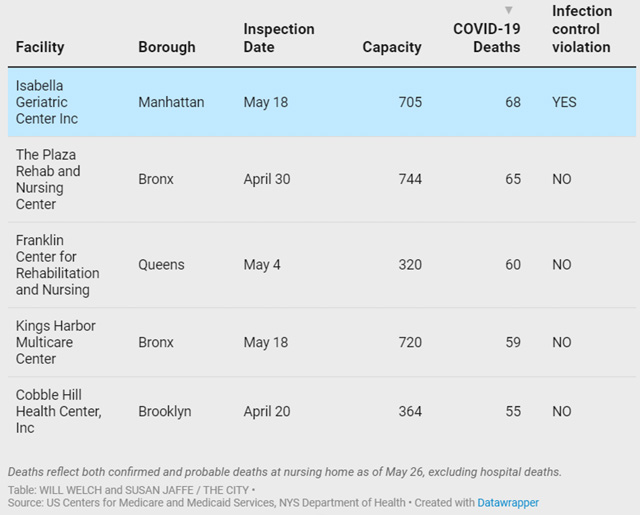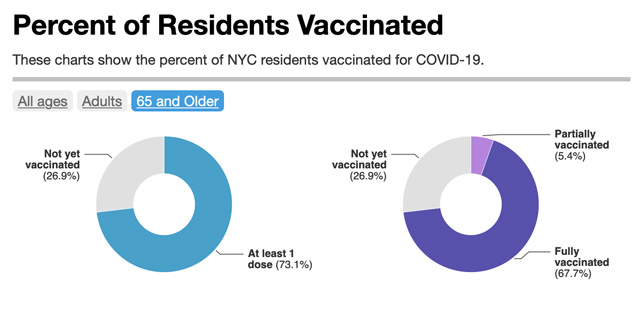How Bronx Seniors Coped During Covid-19
By Elizabeth Duluc
There are more than 100,000 seniors over the age of 65 in The Bronx. The spread of Covid-19 negatively impacted the senior community’s mental health by reducing their opportunities to socialize. When panic ensued across the city, there were shortages of food, medication, masks, along with the fear of contracting Covid-19 around every corner. Stores began to realize how the senior community was being impacted and implemented hours that would be just for those 65 and older. BJ’s, a wholesale club, located in the Bronx created a new schedule in response to Covid-19 to accommodate for seniors. Members of the club who were over 60 years old could shop from 8AM to 9AM on Mondays, Wednesdays and Fridays.
There were also many programs set up across the city to keep the immune compromised from infection. New York City created a program called Get Food NYC, which helps anyone who needs food after being affected by Covid-19. One of its subsections is aimed directly at seniors and those who are unable to go out and get food on their own. The program will directly deliver food to seniors who are unable to go out due to risk of exposure. The site directs users to fill out a questionnaire that asks about age and if you are immune compromised as well as how many days’ worth of food you will need. The service will then send food deliveries directly to your home and leave them at your doorstep.
 Source: CDC
Source: CDC
Aaron Bryant, a college student from the Bronx worried for his grandmother’s well-being after the city went on pause. “My grandma is 67, she’s diabetic and immune compromised,” said Bryant. “She has dialysis every week and once Covid-19 hit New York, we were worried about how she would go to and from her appointments.” Traveling anywhere became an issue Bryant had to take on for his grandmother, including grocery shopping for his household as well as hers. Many families in the city faced this challenge.
Tania Taveras, 66, used GetFood NYC throughout the pandemic to reduce the risk of exposure and to help her when her husband contracted Covid-19. “When my husband started to get sick, I was so scared,” said Taveras. “It was at the beginning of the lockdown. I didn’t know how I was going to get food or how I would even take care of him on my own. We called the doctors and they urged us to stay home and only to come in if Louis [her husband] was having trouble breathing but he had every other symptom. Being able to get groceries without worrying for free made it a little easier.”
Much like Taveras’s experience with Covid-19, there have been many obstacles for seniors. While seniors are struggling to travel, they are also suffering mentally. The Henry J. Kaiser Family Foundation found in a survey 46% of adults 65 and older worried the virus was having a negative impact on their mental health.
Claudia Goris says she worries about her mother, Ramona Goris, who lives alone. Claudia, who lives in her Bronx apartment with her two children and spouse, has hardly been able to see her mom who she worried is being deeply affected by the pandemic. “When I talk to my mom it’s really different,” she said. “Before she always kept us on our toes and was always out and about in the neighborhood. But now when we talk, she forgets things she just said all the time,” says Goris. “I find myself constantly repeating everything.”
The lack of routine and schedule is impacting the mental health of many seniors. Families are beginning to notice the changes in their loved ones. Before the pandemic, Ramona Goris went to a senior home every week to socialize with other seniors and participate in activities like knitting and crafts. Since the pandemic, she has been forced to stay in her home, Claudia describes how anxious her mother has recently become spending so much time alone. Now Ramona has hired a new homemaker to help her around the house which has been helping her significantly.
“Loneliness amongst the older population will be a much more insidious cause of casualty than we previously realized,” said Dr. Matthew L Russell, a geriatrician and palliative care specialist at Massachusetts General Hospital in May 2020 on the hospital website. He said his patients who were anxious before the pandemic are struggling the most. “They are worriers and now, with lifestyles that are so much quieter, the worry has become that much louder.”
Though Tania, Ramona and Aaron’s grandmother are receiving the help they need from their apartments, there are seniors who haven’t been able to see their families at all because they live in a senior home. The Plaza located on University Avenue in the Bronx is a prime example of how these homes have been affected. Seniors before Covid-19 had a set schedule where they interacted with each other and were able to be a part of the community but that has all changed since the spread of Covid-19.

Before the pandemic, seniors typically met in a recreation room located on the first floor, where they enjoyed bingo games, playing instruments and watching movies. On their own individual floors in the building, they walked room to room freely to converse and sat in their ‘living room’ area to listen to music together. The seniors were looked over by a small nursing staff on each floor that knew each of their names and specific needs. This staff would bring them in to their dining room each morning, afternoon and evening for meals and from then they would entertain residents’ visitors and residents.
When reaching out to The Plaza for comment on senior daily lives, they did not respond to requests for comment. When talking to former employee Aisha Bryant, she said she was kept away from the seniors but there was strict policy on going into the building and remaining safe. They took her temperature upon entry and she stayed in her office all day.
The Plaza was a part of a slew of senior homes in New York City with high death rates at the beginning of the pandemic. By May 2020, The Plaza West had about 65 deaths, making it the hardest hit nursing home in the Bronx borough. Though senior homes couldn’t be reached for comment, home health aid Luz Rodriguez who works in the Bronx expressed her concern for the senior community. “From the beginning of the pandemic I knew things were going to be different for older people,” said Rodriguez. “My patients are having trouble remembering things really often and they seem to be sadder.” Rodriguez said her patients often mentioned their families and wanted the pandemic to be over. “It’s really sad and I hope they can come back from this,” she said. Rodriguez sits with her patients daily and tries to carry on regular conversation in hopes of making them feel a little less lonely. She also cleans up their home and tries to create a happy environment to combat the isolation.

The Mass General Department of Medicine at the start of the pandemic identified patients who were the most at risk of loneliness and worked to incorporate technology such as computers for video calls into these seniors’ lives. Through technology, health care providers were able to support seniors and provide resources.
Technology is a tool being used all across the world for the senior community but there is a learning curve. Pew Research Center found the number of seniors who use smart phones doubled between 2013 and 2017, yet only four in 10 owned one.
Caring, a website for families to find senior resources, listed ways families can incorporate technology into their senior family members daily lives. The website listed cellphones, tablets, laptops, smart speakers as well as new technology for home modifications and medical alert systems.
“It’s been hard not having my grandchildren around to help me with my phone,” say Taveras. “Everyone started using this app ‘Zoom’ to talk. Me and my sisters had such a hard time figuring out how to call each other through it. We used to see each other every week and now I have to figure out this app every time I want to see their faces.”

Goris had a similar issue trying to help her mom understand Whatsapp, “She doesn’t speak English and she has no patience,” says Goris. “She hits all the buttons, which is funny sometimes but also so annoying when I’m just trying to have a simple face to face conversation. This has been one of the most taxing tasks during the pandemic.”
Goris may be able to see her mother sooner than she expected with the rapid rollout of the Covid-19 vaccine in New York City. As of June 15, 128,597 of Bronx residents over 65 were fully vaccinated as are 68% of seniors in the city. On May 17, Governor Andrew Cuomo announced New York State will adopt the revised guidance from the Center for Disease Control, allowing fully vaccinated individuals to not wear masks in many outdoor settings and some indoor settings.
Though this is good news for many who have been anticipating the lift on the mask mandate, businesses are still allowed to have their own masking rules. Schools will also fully open in September but will be masked according to the governor. “New Yorkers have worked hard over the last year to prevent the spread of Covid-19 and keep each other safe, that work has paid off and we are ecstatic to take this next step in the reopening of our beautiful state.”
To schedule your vaccination, visit vaccinefinder.nyc.gov
